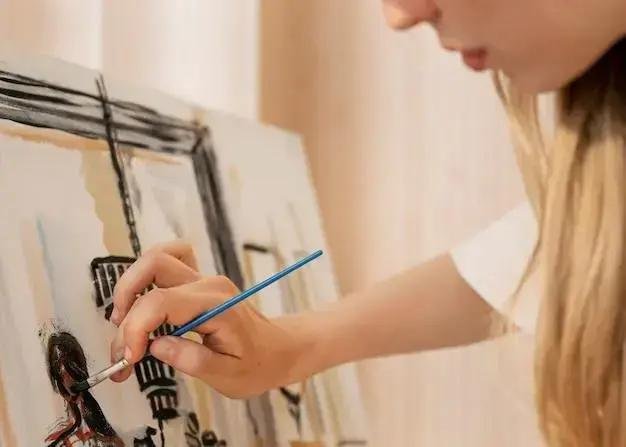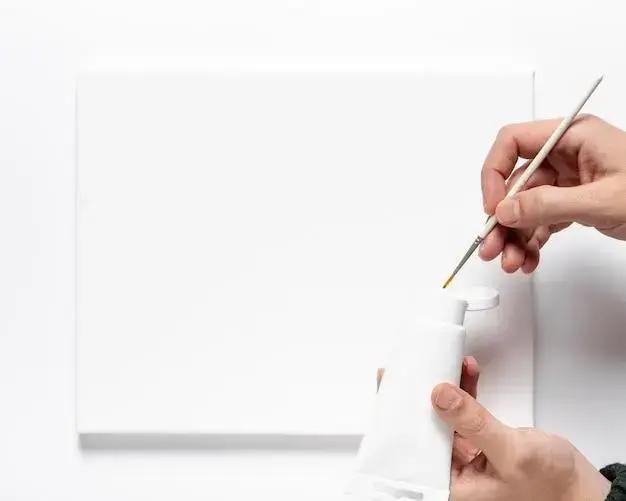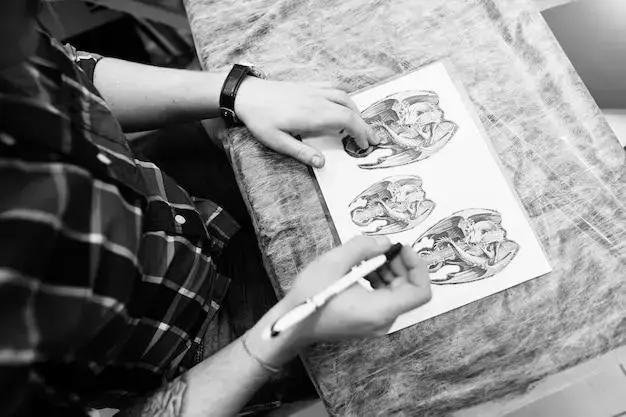If you’re diving into the world of art, mastering beginner sketching techniques is your first step toward becoming a skilled artist.
Whether you’re doodling for fun or aiming to create stunning illustrations, these foundational techniques will help you express your creativity.
In this article, we’ll explore essential methods that every aspiring artist should know, making your journey into sketching both enjoyable and rewarding.
Understanding Basic Shapes
Understanding basic shapes is crucial for any artist, especially beginners. Everything you see can be broken down into simple geometric forms like circles, squares, triangles, and rectangles. This technique simplifies the drawing process and helps you capture the essence of your subject.
Start by practicing these shapes individually. Draw circles and focus on making them as round as possible—this will improve your control over the pencil. Next, move on to squares and rectangles, paying attention to the angles and proportions. Once you’re comfortable with these shapes, try combining them. For example, a human figure can be constructed using circles for the head and joints, rectangles for the torso and limbs, and triangles for the feet.
As you sketch, remember to keep your lines light and loose. This way, you can easily adjust your shapes without the pressure of making them perfect right away. The goal is to create a solid foundation before adding details.
Additionally, try to observe the world around you. Look for the basic shapes in everyday objects. A coffee cup, for instance, is primarily a cylinder, while a house can be simplified to a rectangle topped with a triangle. This practice will sharpen your observational skills and help you translate what you see onto paper.
In summary, mastering basic shapes is a fundamental step in your sketching journey. It not only enhances your drawing skills but also boosts your confidence as you progress to more complex subjects.
The Importance of Line Quality
Line quality plays a significant role in sketching and can dramatically affect the overall feel of your artwork. It refers to the characteristics of the lines you use—thickness, texture, smoothness, and variation. Understanding line quality can help you convey depth, movement, and emotion in your sketches.
First, let’s talk about thickness. Thicker lines often indicate strength or emphasis, while thinner lines can suggest delicacy or detail. As you practice, experiment with varying the pressure on your pencil or pen to create lines of different thicknesses. This not only adds interest to your sketches but also guides the viewer’s eye to important areas.
Next, consider the texture of your lines. Smooth, continuous lines can give a clean and polished look, while jagged or broken lines can convey energy or chaos. Think about what you want to express in your drawing. For instance, a flowing river might be best represented with smooth, wavy lines, whereas a rough mountain range could benefit from sharper, more erratic lines.
Variation in Line Quality
Another key aspect is the variation in line quality. Using a mix of thick and thin lines, as well as different textures, can add depth and dimension to your work. This technique is especially useful in shading and creating shadows. By layering lines of varying quality, you can simulate gradations of light and shadow, making your sketches more realistic.
Finally, don’t forget about the emotional impact of line quality. Different line styles can evoke different feelings. For example, soft, rounded lines might feel friendly and inviting, while sharp, angular lines might convey tension or unease. As you develop your skills, pay attention to how your choice of lines affects the mood of your artwork.
In conclusion, mastering line quality is essential for any aspiring artist. It not only enhances the visual appeal of your sketches but also allows you to express your unique style and emotions effectively. So grab your pencil and start experimenting with different line qualities to see how they transform your drawings!
Shading Techniques for Depth
Shading techniques are vital for adding depth and dimension to your sketches. They can transform a flat drawing into a three-dimensional representation, allowing you to create more realistic and engaging artwork. Here are some essential shading techniques every beginner should explore.
First up is the hatching technique. This involves drawing closely spaced parallel lines to create shadows. The closer the lines are to each other, the darker the area appears. It’s a great way to build up value gradually. You can vary the angle of the lines to suggest different surfaces or textures. For instance, horizontal lines can indicate flat surfaces, while diagonal lines can suggest depth.
Next, we have cross-hatching, which takes hatching a step further. By layering sets of parallel lines in different directions, you can create richer shadows and more complex textures. This technique is particularly useful for areas that require more depth, like folds in clothing or the contours of a face.
Another effective method is blending. This technique involves smoothing out your pencil strokes to create a soft transition between light and dark areas. You can use your finger, a blending stump, or even a tissue to achieve this effect. Blending is perfect for creating smooth gradients, like the soft shadows on a rounded object or the subtle changes in skin tone.
Stippling is another interesting technique that uses dots instead of lines. By varying the density and size of the dots, you can create different values and textures. This method can be quite time-consuming but yields beautiful results, especially for detailed areas like fur or foliage.
Lastly, don’t forget to observe light sources and how they interact with objects. Understanding where the light hits and where the shadows fall will enhance your shading skills significantly. Practice sketching simple objects under different lighting conditions to see how shadows change and how you can replicate that in your drawings.
In summary, mastering shading techniques is essential for adding depth to your sketches. Experiment with hatching, cross-hatching, blending, and stippling to find what works best for you. With practice, you’ll be able to create stunning, three-dimensional drawings that truly capture the viewer’s attention.
Using Reference Images Effectively
Using reference images effectively is a game-changer for artists, especially beginners. They can serve as invaluable tools that help you understand proportions, perspectives, and details that might be challenging to capture from memory alone. Here’s how to make the most out of reference images in your sketching practice.
First, choose your reference images wisely. Look for high-quality images that clearly show the subject you want to draw. Whether it’s a photograph of a landscape, a still life, or a portrait, ensure the lighting and angles are conducive to your artistic goals. A well-lit image with clear details will provide a better foundation for your sketch.
Next, don’t just copy the reference image blindly. Instead, use it as a guide. Start by breaking down the image into basic shapes, just like you practiced with basic shapes earlier. This will help you capture the overall composition without getting lost in the details. Focus on the proportions and relationships between different elements in the image.
As you draw, regularly check back with the reference image. This will help you stay on track and make adjustments as needed. It’s easy to get caught up in your own style and lose sight of the original reference, so keep it nearby to ensure accuracy.
Using Multiple Reference Images
Another important tip is to use multiple reference images. Combining elements from different sources can lead to more dynamic and interesting compositions. For instance, you might take the background from one image and the subject from another. This approach encourages creativity and allows you to develop your unique style.
Moreover, consider using reference images not just for realistic representation but also for inspiration. Analyze how other artists use reference images in their work. Look at their styles, techniques, and how they interpret their subjects. This can provide you with valuable insights and ideas for your own sketches.
Lastly, remember that reference images are there to aid your creativity, not stifle it. Feel free to deviate from the reference as you become more confident in your skills. Use it as a stepping stone to develop your own artistic voice.
In conclusion, using reference images effectively can enhance your sketching skills tremendously. By choosing quality references, breaking down shapes, and allowing yourself to experiment, you can elevate your artwork and create pieces that resonate with your unique style.
Practicing Gesture Drawing
Practicing gesture drawing is an essential exercise for any aspiring artist. This technique focuses on capturing the essence and movement of a subject rather than getting bogged down in details. Gesture drawing helps improve your ability to observe and depict the human figure in a dynamic and fluid manner. Here’s how to get started and make the most of your gesture drawing practice.
First, understand the purpose of gesture drawing. It’s all about speed and spontaneity. The goal is to create quick sketches that capture the basic forms and motions of the subject. This practice helps you develop a sense of rhythm and flow in your drawings, which is crucial for bringing life to your artwork.
Begin by setting a timer for short intervals—typically between 30 seconds to 2 minutes per pose. This constraint encourages you to focus on the overall movement and proportion rather than getting lost in details. You can use live models, online resources, or even photographs for your gesture drawing sessions.
As you draw, concentrate on the main lines of action in the pose. Identify the flow of the body, the direction of limbs, and the overall silhouette. Use light, loose lines to sketch the gesture, allowing yourself to move quickly and fluidly. Remember, these sketches don’t have to be perfect; they’re about capturing the energy and movement of the pose.
Once you feel comfortable with basic gestures, try varying your approach. Experiment with different poses, angles, and body types. This will help you understand how different forms interact in space and how to convey that in your sketches. You can also challenge yourself by drawing gestures from unusual perspectives or dynamic actions, like dancing or sports.
Another helpful tip is to review your gesture drawings regularly. Look for areas where you excel and where you might need improvement. Analyzing your work can highlight patterns in your drawing style and help you refine your skills over time.
Incorporating gesture drawing into your regular practice routine can significantly enhance your artistic abilities. It encourages you to loosen up, think quickly, and develop a deeper understanding of movement and form.
In summary, gesture drawing is a powerful tool for improving your sketching skills. By focusing on the essence of movement and practicing regularly, you’ll be able to create more dynamic and expressive artwork that captures the viewer’s attention.
Conclusion
In conclusion, mastering beginner sketching techniques is a rewarding journey that opens up a world of creativity and expression. By understanding basic shapes, you lay a solid foundation for your drawings, while exploring line quality enhances the emotional impact of your artwork.
Shading techniques add depth and realism, making your sketches come alive, and using reference images effectively ensures accuracy and inspiration in your work.
Lastly, practicing gesture drawing helps you capture movement and energy, bringing a dynamic quality to your art.
As you continue to practice these techniques, remember that improvement takes time and patience. Embrace the process, experiment with different styles, and most importantly, have fun with your sketching.
With each stroke of your pencil, you’re not just creating art; you’re developing your unique voice as an artist. So keep sketching, keep exploring, and let your creativity flow!
FAQ – Frequently Asked Questions about Beginner Sketching Techniques
What are the basic shapes I should practice for sketching?
Start with circles, squares, rectangles, and triangles. These shapes form the foundation of more complex subjects.
How can I improve my line quality in sketches?
Experiment with varying the thickness, texture, and smoothness of your lines. Use pressure changes to create different effects.
What shading techniques should I learn as a beginner?
Focus on hatching, cross-hatching, blending, and stippling to add depth and dimension to your drawings.
How can I effectively use reference images?
Choose high-quality images, break them down into basic shapes, and use them as guides rather than copying them directly.
What is gesture drawing and why is it important?
Gesture drawing captures the essence and movement of a subject quickly, helping you develop your observational skills and fluidity in drawing.
How often should I practice these sketching techniques?
Consistency is key. Try to practice daily or several times a week to see improvement in your skills over time.





